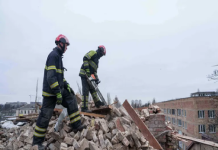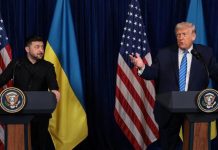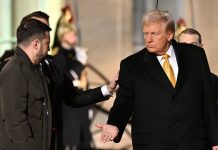MINSK, Belarus (Reuters)-In a major development, Belarusian President Alexander Lukashenko confirmed that his country had begun supplying Russian tactical nuclear weapons. Lukashenko highlighted the power of these warheads, saying some of them have three times the power of the atomic bombs dropped on Hiroshima and Nagasaki during World War II. The deployment is Moscow’s first such weapons project outside of Russia since the collapse of the Soviet Union. As tensions rise and geopolitical dynamics evolve, the move raises concerns among world powers, including the United States and China. Let’s dive deeper into the details of this strategic development.
Delivery process and possible effects:
Lukashenko shared the key information during an interview with Russia’s state TV channel Rossiya-1, which was later posted on the Telegram channel of the Belarusian state news agency Belta. He revealed that the delivery of these Russian tactical nuclear weapons is currently underway. These warheads are classified as short-range and low-yield nuclear weapons, designed for potential battlefield deployment. Russian President Vladimir Putin, who retains control of the weapons, announced in March that they would be deployed in Belarus once adequate storage facilities were in place. Notably, Russia’s decision echoes the long-standing American practice of deploying tactical nuclear weapons in various European countries.
The deployment of Russian tactical nuclear weapons in Belarus has drawn the attention of the United States, its allies and China. The US has criticized Putin’s decision, stressing that he is steadfast on his strategic nuclear arsenal. However, there are no indications that Russia is preparing to use nuclear weapons. China, closely monitoring the situation, has consistently advocated against the use of nuclear weapons in the ongoing conflict in Ukraine. The introduction of these warheads outside of Russian territory indicates a changing regional security landscape and further complicates geopolitical dynamics in Eastern Europe.
Belarusian President Alexander Lukashenko, a close ally of Putin, revealed that his country has a number of Soviet-era nuclear storage facilities, some of which have been restored. Lukashenko dismissed concerns about Russian control of the weapons, stressing that he and Putin could easily coordinate their use if necessary. Additionally, he said that the physical deployment of Russian tactical nuclear weapons on Belarusian soil is imminent, with the country also having the infrastructure to accommodate long-range missiles if needed. Lukashenko sees the nuclear deployment as a deterrent against potential aggressors and insists that Belarus is a target from 2020, citing Western efforts to destabilize the country.
Belarus shares borders with three NATO member states, Lithuania, Latvia and Poland, adding an extra layer of complexity to the situation. Lukashenko’s decision to align Belarus with Russia’s “special military operation” in Ukraine has further strained relations with the West. The 68-year-old leader, who has ruled Belarus since 1994, alleged that the West had continuously sought to undermine his government, especially after mass protests erupted following a disputed presidential election in 2020. Lukashenko’s acquisition of nuclear weapons marks a significant escalation, as no nuclear-armed country has faced military action in recent history.






